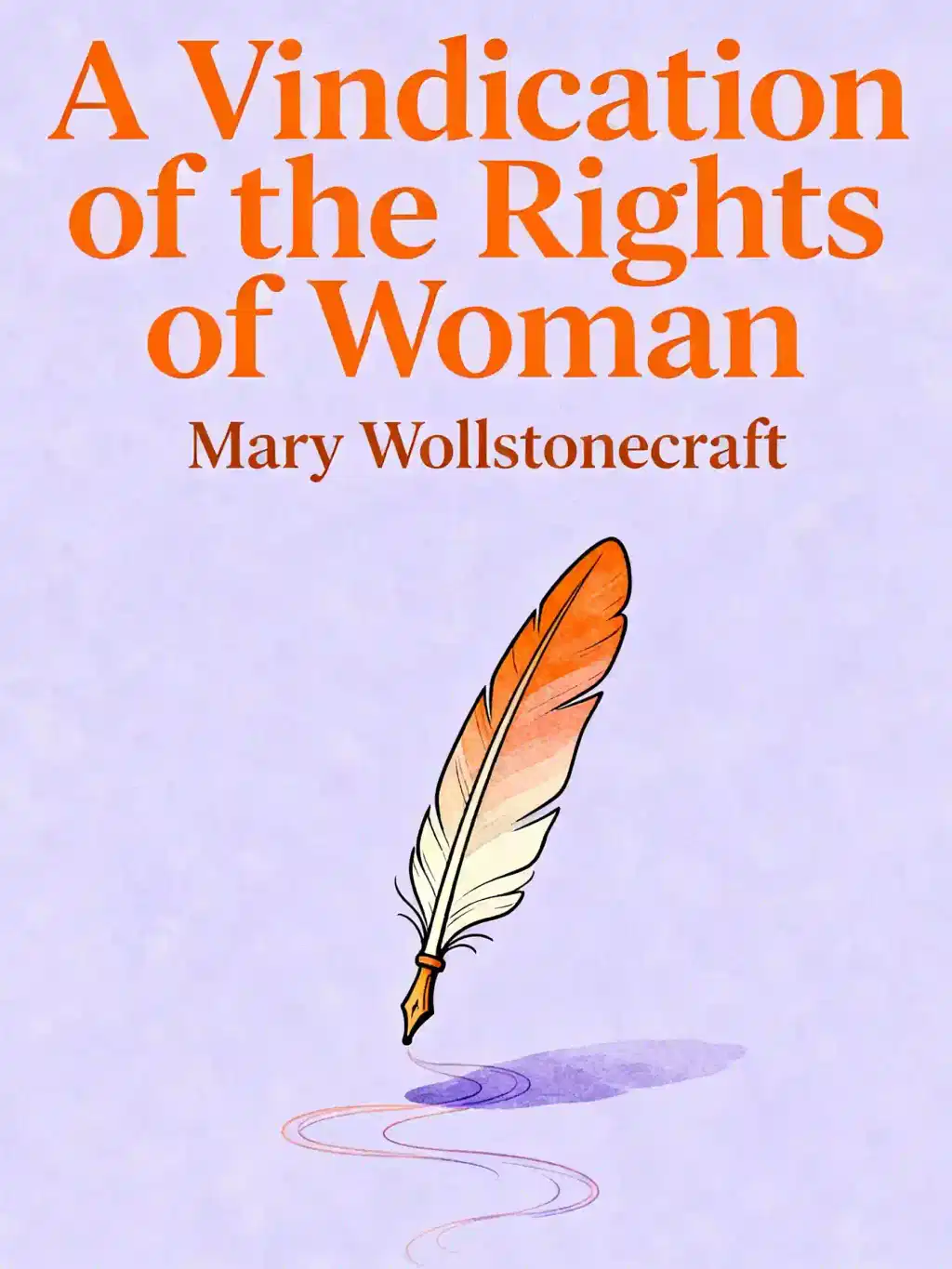What is
A Vindication of the Rights of Woman about?
A Vindication of the Rights of Woman (1792) by Mary Wollstonecraft argues for women’s equality through educational reform, asserting that society benefits when women develop reason and virtue. The essay critiques 18th-century norms that confined women to superficial roles, advocating instead for coeducation and intellectual partnership between genders. It laid foundational ideas for modern feminism by framing women’s rights as human rights.
Who should read
A Vindication of the Rights of Woman?
This book is essential for students of feminist theory, history, and philosophy. Educators, gender studies scholars, and readers exploring Enlightenment-era critiques of societal structures will find its arguments about equality, education, and moral virtue transformative. It’s also valuable for anyone examining the historical roots of women’s rights movements.
What are the main themes in
A Vindication of the Rights of Woman?
Key themes include:
- Education reform: Equal schooling for girls and boys to nurture reason.
- Companionate marriage: Women as intellectual equals to men in relationships.
- Moral virtue: Society’s morality depends on ending women’s oppression.
- Critique of sentimentalism: Rejecting the idea that women should prioritize emotions over rationality.
How does Wollstonecraft argue for women’s education?
Wollstonecraft claims neglecting women’s education perpetuates societal misery by keeping them dependent on men. She proposes national coeducational schools to cultivate reason and citizenship, arguing educated women become better mothers, wives, and contributors to moral progress. Education, she asserts, frees women from “tyranny of ignorance.”
What famous quotes come from
A Vindication of the Rights of Woman?
- “I earnestly wish to point out in what true dignity and human happiness consists”: Advocates self-respect through intellectual growth.
- “Strengthen the female mind by enlarging it”: Emphasizes education as liberation.
- “Women are told to be subordinate from their cradle”: Critiques systemic gender bias.
How does this book compare to Wollstonecraft’s
A Vindication of the Rights of Men?
While Rights of Men (1790) critiques Edmund Burke’s conservative views on the French Revolution, Rights of Woman expands her arguments to gender equality. Both works champion reason over tradition, but the latter specifically targets patriarchal structures hindering women’s potential.
What criticisms exist about
A Vindication of the Rights of Woman?
Critics argue Wollstonecraft overly focuses on middle-class women and frames education as a tool to benefit men rather than women’s autonomy. Some modern feminists note her failure to address class or racial inequities. Others contest her dismissal of female emotions as “weakness.”
Why is
A Vindication of the Rights of Woman still relevant today?
The book remains a benchmark for discussions on gender equity in education, workplace discrimination, and societal expectations. Its call for women’s intellectual agency resonates in debates about reproductive rights, pay gaps, and representation in leadership.
How does Wollstonecraft view marriage in
A Vindication of the Rights of Woman?
She envisions marriage as a partnership of equals, where shared education fosters mutual respect. By rejecting the idea of women as “alluring mistresses,” she argues marriages built on reason—not subservience—create virtuous households and societal progress.
What educational reforms does Wollstonecraft propose?
Her plan includes:
- Free national schools: Coeducational institutions teaching citizenship.
- Home education: Parents nurturing domestic virtues.
- Curriculum focus: Critical thinking over rote memorization.
She believed this system would dismantle gender hierarchies.
How did
A Vindication of the Rights of Woman influence feminism?
The book pioneered arguments for women’s intellectual equality, inspiring later suffragists and feminist theorists like Simone de Beauvoir. Its linkage of education, autonomy, and societal health remains central to feminist discourse.
What metaphors does Wollstonecraft use in the book?
She compares uneducated women to “flowers planted in too rich a soil” — beautiful but fragile. Conversely, educated women are likened to “rational creatures” capable of moral and civic contribution, framing intellect as liberation from societal decay.




















